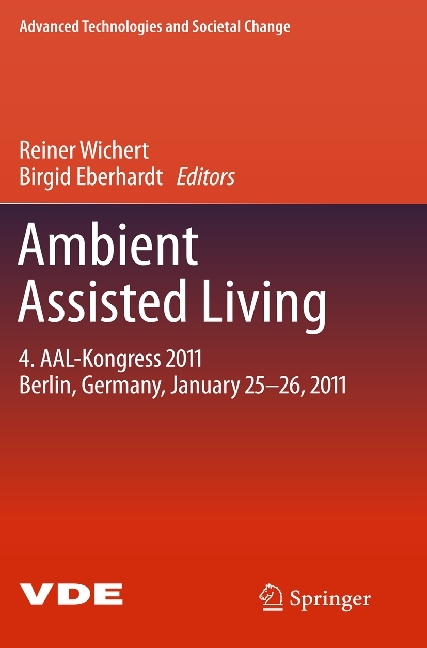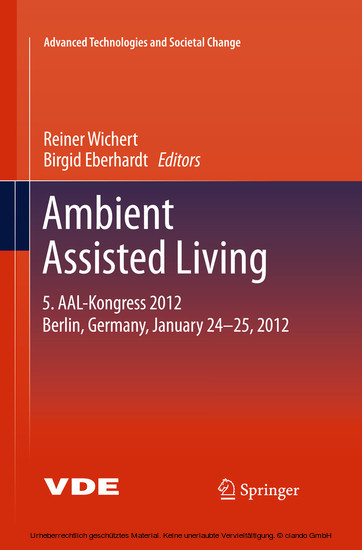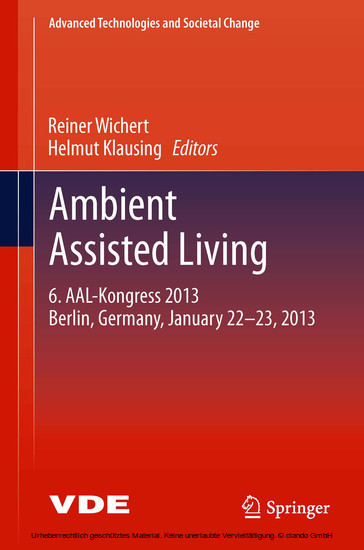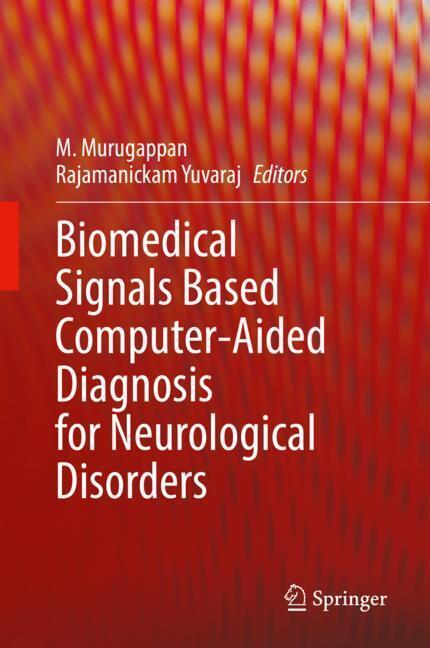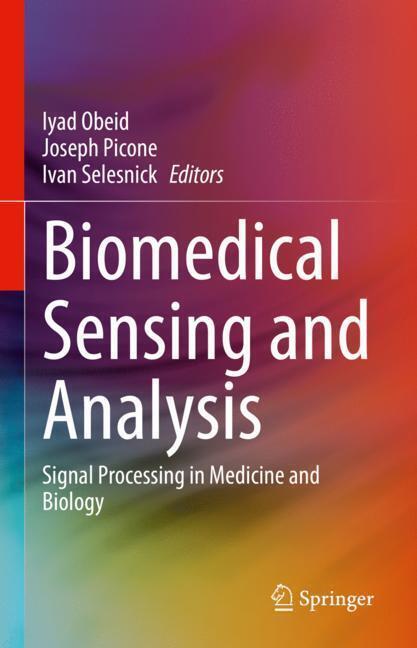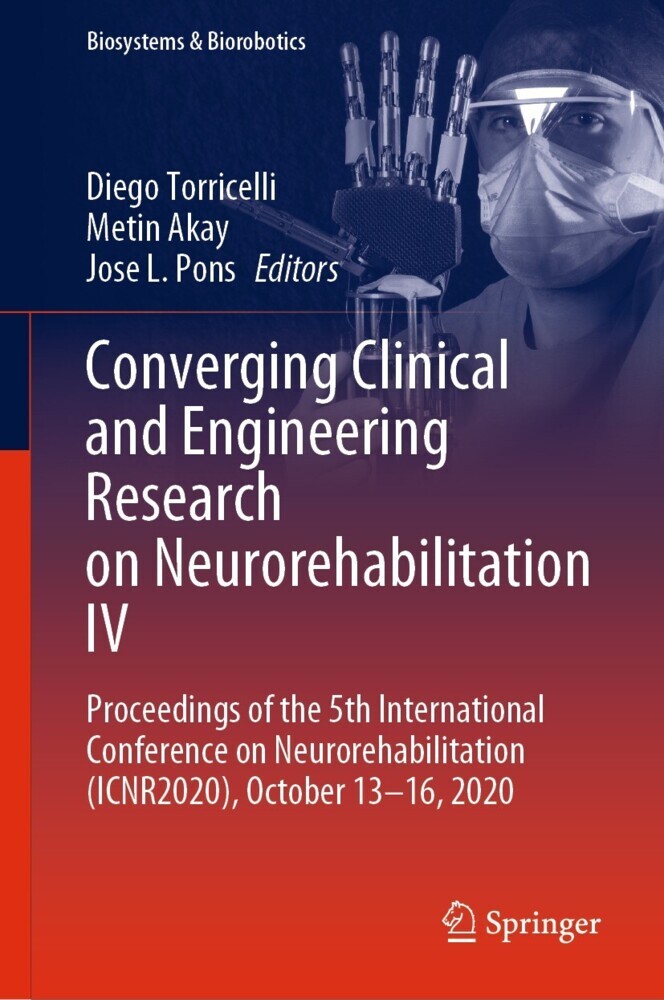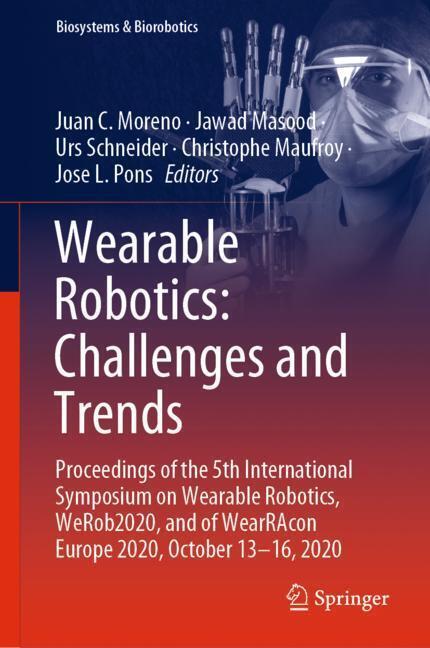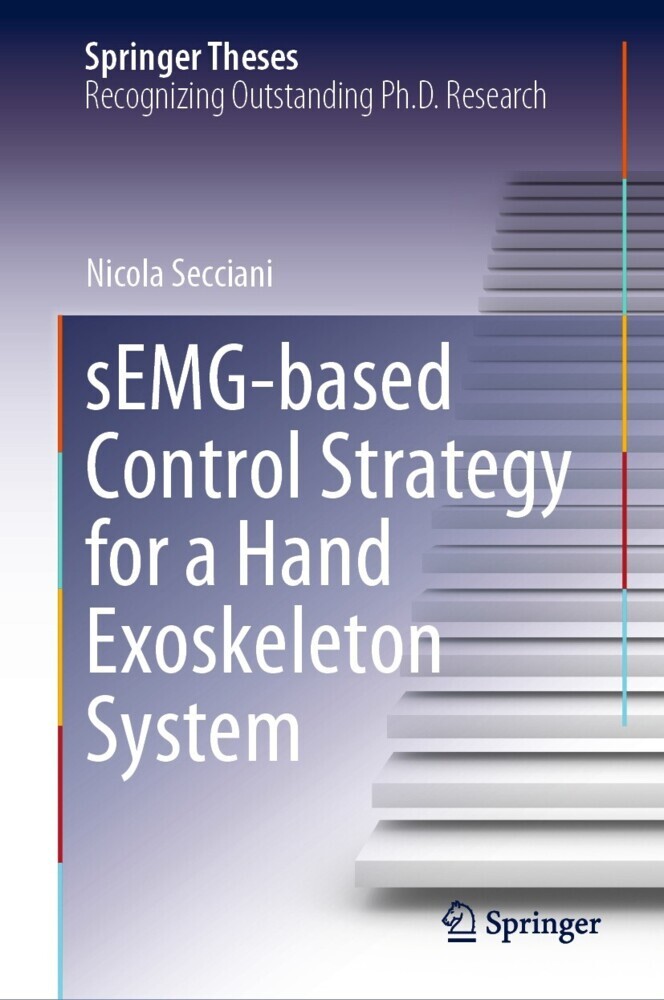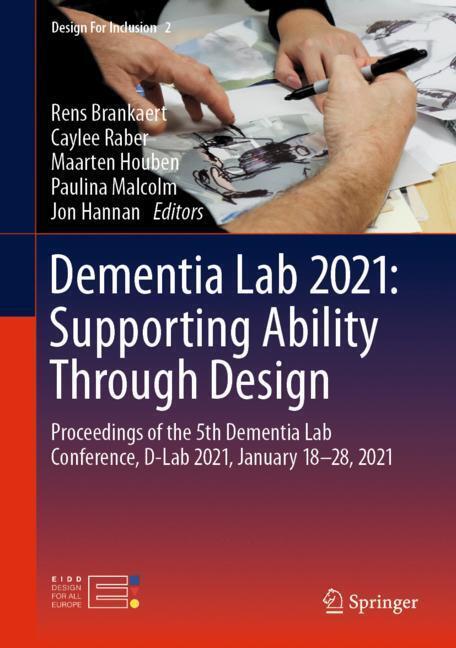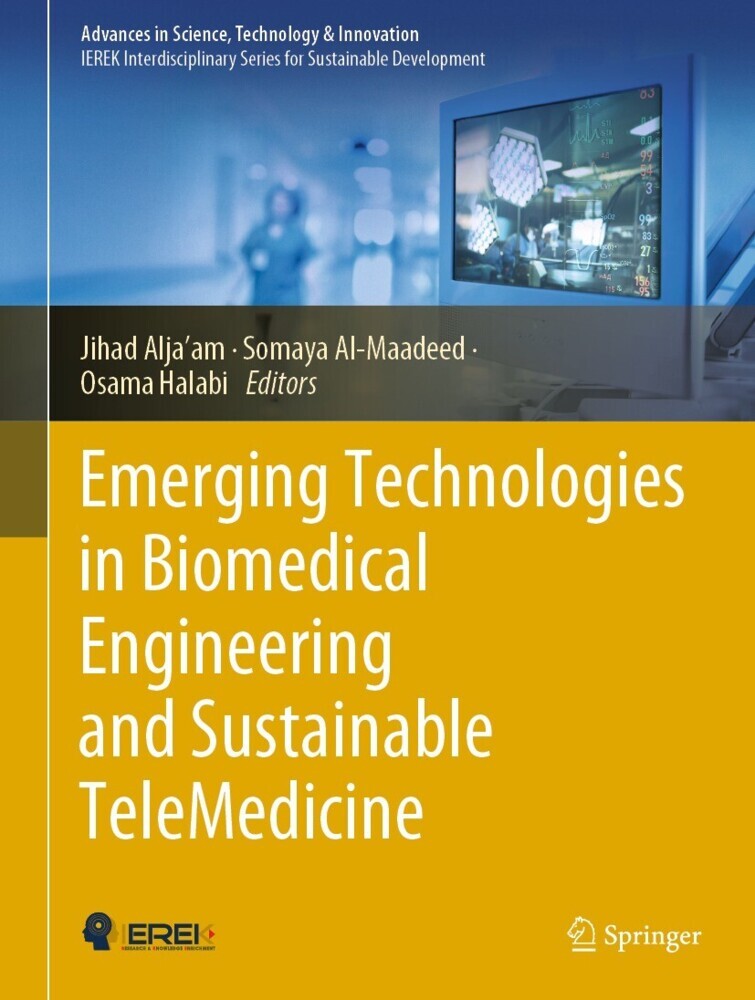Ambient Assisted Living
4. AAL-Kongress 2011 Berlin, Germany, January 25-26, 2011
In this book, 22 authors discuss development of Ambient Assisted Living. It presents new technological developments which support the autonomy and independence of individuals with special needs. As the technological innovation raises also social issues, the book addresses micro and macro economical aspects of assistive systems and puts an additional emphasis on the ethical and legal discussion. The presentation is supported by real world examples and applications.
1;Title;1 2;Preface;4 3;Organization;5 4;Contents;7 5;Chapter 1: Assistance Systems;10 5.1;Architecture of the 'Daily Care Journal' for the Support of Health Care Networks;11 5.1.1;Introduction;11 5.1.2;State of the Art;12 5.1.3;Application Scenarios;13 5.1.3.1;Setup of the Care Network;14 5.1.3.2;Inclusion of the Patient;14 5.1.3.3;Assign Access Rights;14 5.1.3.4;Form Creation;14 5.1.3.5;Care Documentation;15 5.1.3.6;Presentation of Care Document;15 5.1.3.7;Quality Management of Documentation;15 5.1.3.8;Optimizing Care Processes;15 5.1.3.9;AEDL Assessment;16 5.1.3.10;AEDL Presentation;16 5.1.4;Architecture;16 5.1.4.1;Logical Architecture;17 5.1.4.2;General Requirements of the Concrete Architecture;20 5.1.4.3;Service Modules;21 5.1.5;Future Work;23 5.1.6;References;24 5.2;Technological Stress - Mental Strain of Younger and Older Users If Technology Fails;25 5.2.1;Initial Situation;26 5.2.2;Research Methodology;26 5.2.3;Description of Experiment;27 5.2.4;Evaluation;29 5.2.5;Conclusions;35 5.3;Ubiquitous Life Support Systems for an Ageing Society in Japan;38 5.3.1;Japan as a Forerunner;38 5.3.1.1;Variety of the Players;38 5.3.1.2;Universities as the Scientific "Spine";39 5.3.1.3;General Innovation Enthusiasm;39 5.3.1.4;Growing Old in Japan;39 5.3.2;Strategies and Developments in Japan;40 5.3.2.1;The U Japan Strategy - Solution of Social Problems by Information Technology;40 5.3.2.2;Microsystem and Micromachines;41 5.3.2.3;Robotics;42 5.3.2.4;Yaoyorozu: Technology as an Assistant in the Everyday Life;42 5.3.3;Examples of Assistance Technologies in Categories;42 5.3.3.1;Home Care: Robotic Bed;42 5.3.3.2;Social Interaction: NetTansorWeb;44 5.3.3.3;Health and Wellness: Intelligence Toilet;45 5.3.3.4;Information and Learning: Dr. Kawashima;46 5.3.3.5;Professional Life: Stride Management Assistant;47 5.3.3.6;Mobility: Toyota i-Swing;48 5.3.3.7;Home Automation;50 5.3.3.8;Smart City: Town Management System;50 5.3.4;Implementing of AAL Technologies by Means of Modularized Residential Systems;51 5.3.5;Conclusions;54 5.3.5.1;Thematization of High-Tech-Assistance Since the Beginning of the 70s;54 5.3.5.2;"Universal Technologies" Instead of Agespecific Technologies;54 5.3.5.3;Technology and Status of the Elderly;54 5.3.5.4;Working with Preseries or Test Series;55 5.3.5.5;Modularized Residential Buildings as a Sales Motor;55 5.3.6;References;55 6;Chapter 2: Human Machine Interface;56 6.1;An Intelligent House Control Using Speech Recognition with Integrated Localization;57 6.1.1;Introduction;57 6.1.2;House Environment;58 6.1.3;Speech Recognition in House;59 6.1.3.1;Overall Design;59 6.1.3.2;Speech Recognition;61 6.1.4;Localization in House;61 6.1.4.1;Technical Realization;63 6.1.5;Experiments;64 6.1.5.1;Speech Recognition;64 6.1.5.2;Localization;65 6.1.6;Summary;67 6.1.7;References;67 6.2;Ambient Voice Control for a Personal Activity and Household Assistant;69 6.2.1;Introduction;69 6.2.2;User Acceptance Study;70 6.2.3;Challenges and Demands for Voice Controlled Ambient Assistive Technologies;71 6.2.3.1;Pre-processing Concepts for Speech Quality Enhancement;72 6.2.3.2;Concepts in Automatic Speech Recognition to Improve Recognition Performance for Acoustically Adverse Conditions;74 6.2.4;An Automatic Speech Recognition Experiment in an AAL Scenario;76 6.2.5;Summary and Conclusion;78 6.2.6;References;79 6.3;Natural Gesture Interaction with Accelerometer-Based Devices in Ambient Assisted Environments;81 6.3.1;Introduction;81 6.3.2;Overview and Related Works;82 6.3.2.1;Gestures Depends on Cultural Back-Ground;83 6.3.2.2;Throw and Tilt Interaction;83 6.3.2.3;Hand-Drawn Gestures;83 6.3.2.4;Postures and Gestures in Human-Computer-Interaction;84 6.3.3;Experiment for Determining Intuitive Gestures Using Accelerometer-Based Interaction Devices;84 6.3.3.1;Overview;84 6.3.3.2;Evaluation Environment;85 6.3.3.3;Participants;86 6.3.3.4;Evaluation Tasks;86 6.3.3.5;Accomplishment;87 6.3.4;Results;88 6.3.5;Discussion;88 6.3.6;Conclusion;89 6.3.7;References;89 6.
Wichert, Reiner
Eberhardt, Birgid
| ISBN | 9783642181672 |
|---|---|
| Artikelnummer | 9783642181672 |
| Medientyp | E-Book - PDF |
| Copyrightjahr | 2011 |
| Verlag | Springer-Verlag |
| Umfang | 318 Seiten |
| Sprache | Englisch |
| Kopierschutz | Digitales Wasserzeichen |

